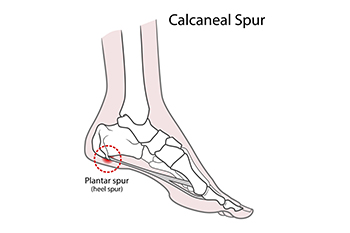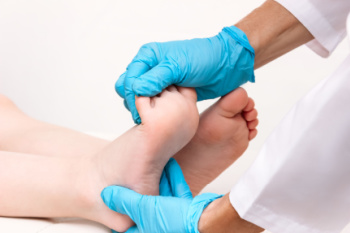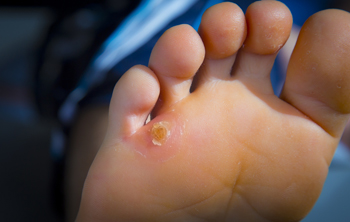
Bone spurs are bony growths that form along the edges of foot bones, often in areas where joints and ligaments meet. Heel spurs are a common type of bone spur, often causing pain and discomfort. They typically develop due to repetitive stress, aging, or conditions like arthritis, plantar fasciitis, or obesity. Over time, heel spurs can cause discomfort, particularly when they irritate nearby tissues. Common symptoms of heel spurs include pain, swelling, and inflammation, particularly when walking or standing for long periods. In some cases, certain types of bone spurs may not cause any symptoms and may only be discovered during an X-ray for another condition. Treatment for heel spurs may involve conservative measures like rest, anti-inflammatory medications, and custom orthotics to relieve pressure. In severe cases, targeted exercises or surgery may be necessary to remove the spur and restore function. A podiatrist can evaluate your condition, recommend appropriate treatments, and help manage pain. If you are experiencing foot pain or suspect a heel spur, it is suggested that you schedule an appointment with a podiatrist for a proper diagnosis and care plan.
Heel spurs can be incredibly painful and sometimes may make you unable to participate in physical activities. To get medical care for your heel spurs, contact Vincent, Vess from Fourth River Foot & Ankle. Our doctor will do everything possible to treat your condition.
Heels Spurs
Heel spurs are formed by calcium deposits on the back of the foot where the heel is. This can also be caused by small fragments of bone breaking off one section of the foot, attaching onto the back of the foot. Heel spurs can also be bone growth on the back of the foot and may grow in the direction of the arch of the foot.
Older individuals usually suffer from heel spurs and pain sometimes intensifies with age. One of the main condition's spurs are related to is plantar fasciitis.
Pain
The pain associated with spurs is often because of weight placed on the feet. When someone is walking, their entire weight is concentrated on the feet. Bone spurs then have the tendency to affect other bones and tissues around the foot. As the pain continues, the feet will become tender and sensitive over time.
Treatments
There are many ways to treat heel spurs. If one is suffering from heel spurs in conjunction with pain, there are several methods for healing. Medication, surgery, and herbal care are some options.
If you have any questions feel free to contact our offices located in Pittsburgh, White Oak, and McKeesport,PA . We offer the latest in diagnostic and treatment technology to meet your needs.









